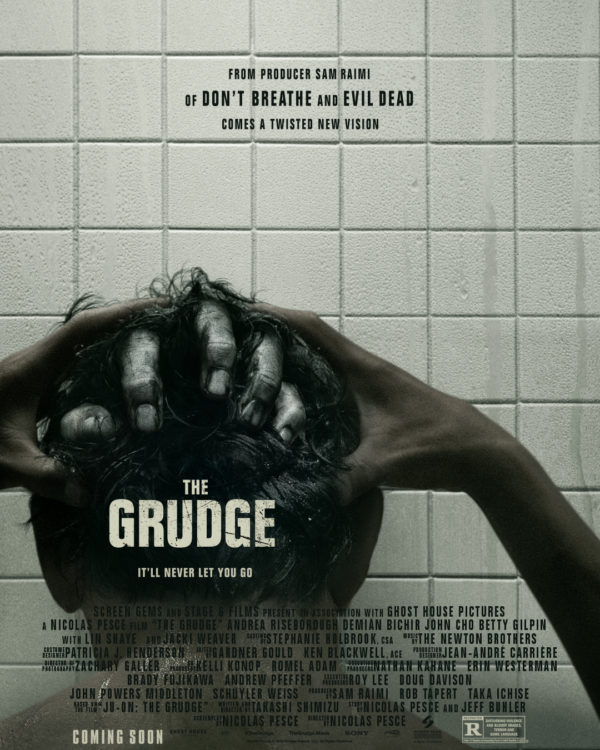The Grudge is back for its third haunt as a Japanese curse haunts multiple families connected by one house.
Quick review: The Grudge is more horrifying than any horror movie — because it's boring. The cheap scares and thin plot do nothing but… well, make you hold a grudge against it.

For the briefest of moments, I thought director Nicolas Pesce's remake of The Grudge was going to be not terrible. I was sorely mistaken. Pesce directed the very solid and very disturbing Piercing last year, which relied on a bleak tone and anxiety-inducing imagery to create a surprisingly effective horror. That, along with a strong cast, gave me hope that maybe he could make up for the dreadful — and not in a good way — 2004 American remake starring Sarah Michelle Geller. The opening moments proved to be all I needed to know otherwise.
Sticking to the script
Like the original 2002 Japanese version, Ju-On: The Grudge, and the 2004 American remake, this version of The Grudge is told as a non-linear narrative following various families who have encountered a vengeful spirit that is created when someone dies in the grip of extreme rage or sorrow. Anyone that crosses its path is killed and the curse is reborn to terrorize another unwitting victim.
At the center of the film is Detective Muldoon (Andrea Riseborough) and her partner Detective Goodman (Demian Bichir) who discover the decomposed body of Lorna Moody (Jacki Weaver) in her car in the middle of the woods. That leads them to other connected murders that have taken place of several the past few years involving real estate agents and expecting parents Peter and Nina (John Cho and Betty Gilpin), elderly couple William and Faith (horror legend Lin Shaye and William Sadler), and a young mother (Tara Westwood).
As the plot gets going, it's interesting enough. Pesce seems to be attracted to slow burns and other than the confounding cold open, he sticks to that pace. By the time we're introduced to John Cho and Betty Gilpin's characters and storyline— two of the actors I was most excited to see — we're already deep into the mystery. Their scenes are easily the most successful narratively and often have the best scares.
However, even those scares feel empty.
💌 Sign up for our weekly email newsletter with movie recommendations available to stream.
ADVERTISEMENT
What you don't know won't hurt you

For all the flaws with the screenplay, it isn't the main reason for the movie's ineffectiveness. The scares leave a lot to be desired. Japanese horror — or J-horror — relies on two things: atmosphere and imagery. The former is often melancholic and full of dread. The latter is what makes J-horror the most terrifying movies. They're less focused on the shock and instead look to unnerve. The biggest issue with The Grudge is that every scare is a jumpscare with no build — yet, they're all predictable.
It also relies on the tired trope of something happening behind the characters that they can't see. Then they turn around and it's gone. That trick is good for a scare maybe once. However, nearly every scare uses that setup. It's almost as if they didn't feel there weren't enough moments of horror, so they used them to fill the gaps.
Horror works because fear is a universal emotion. By removing the anticipation of a scare, you almost lose all of its effectiveness. Add flat characters and a thin plot and The Grudge is yet another in a long line of failed horror reboots.
Random thoughts ?
- The final shot — and entire conclusion — basically comes out of nowhere. It's almost like they forgot to write an ending and just threw something in.
- One of the first shots of the movie is of the ghost. Note for future filmmakers: Make us want to and be terrified to see your monster. That means making us wait.
- None of The Grudge movies are particularly good. So, why do we keep making them?
- The entire cast actually does great work — especially Andrea Riseborough, John Cho, and Betty Gilpin.
Hey, I'm Karl, founder and film critic at Smash Cut. I started Smash Cut in 2014 to share my love of movies and give a perspective I haven't yet seen represented. I'm also an editor at The New York Times, a Rotten Tomatoes-approved critic, and a member of the Online Film Critics Society.